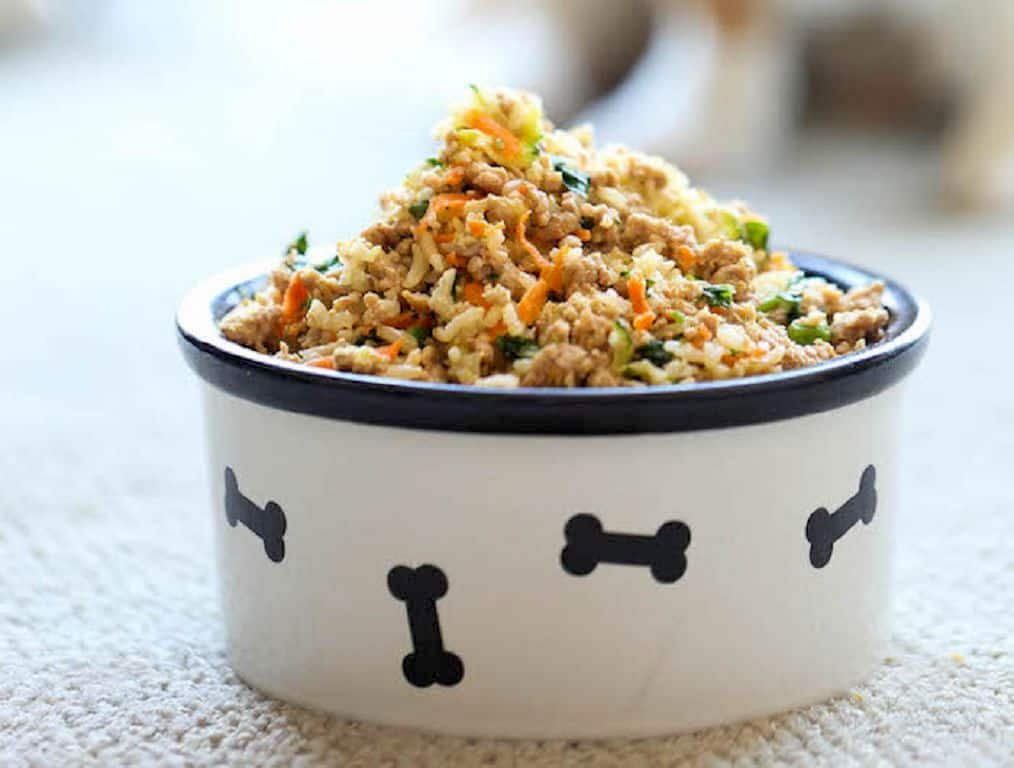If you want to put weight back on your dog, you need to understand why he’s underweight. There are a variety of reasons a dog may lose weight, ranging from mild, routine medical conditions to more serious illnesses.
Common reasons for weight loss in dogs include:
⁃ Poor quality diet.
⁃ Excessive physical energy or extended exposure to cold causing him to burn more calories than he consumes.
⁃ Malabsorption or digestive disorders.
⁃ Hypermetabolic state.
⁃ Anorexia, swallowing disorders or regurgitation causing anorexia.
⁃ Diarrhoea, vomiting or excessive urination causing the loss of too many nutrients.
⁃ Change in diet.
⁃ Stress or a change in routine.
⁃ Routine ageing.
Determining your dog’s ideal weight:
In general, your dog is at a healthy weight if you can see their waist, you can feel their ribs when petting their sides without actually seeing the outline of the ribs and their belly curves upward to meet their hips.
If you can easily see most or all of the ribs, the backbone or hip bones, your dog is more than likely too thin. Some breeds, like Greyhounds, and some hunting and herding dogs (Border Collies, Pointers etc) tend to be leaner than other breeds like Mastiffs and Labrador Retrievers.
Increasing your dogs food:
Firstly increase the amount of food they are getting in a day. For raw feeders, add more muscle meat to help put on the kilos or increase the overall percentage that you feed. For dogs eating a commercial kibble diet, add an extra half-full cup as a mid-day snack. For dogs on a homemade diet, increase the amount of protein and carbs. Do not necessarily change the diet you are already feeding, simply add one more meal to the day to add calories.
Be wary of overfeeding in one meal. It is recommended that dogs be feed twice a day to help avoid bloat. So add an extra mid day feed right before your dog has their afternoon nap.
It is important to remember never to feed your dog one hour before and one hour after exercise, this will prevent bloat and life-threatening gastric torsion.
Keep in mind that by increasing your dog’s diet by a whole meal, you are also changing the bathroom habits of your dog, which may require altering your dog walking schedule.
Full fat cottage cheese is an excellent way to add more calories to your dog’s diet, plus it is full of probiotics and calcium! It tastes great and makes the perfect topper for any kind of diet. A tablespoon or two will do.
Another option is to add one boiled egg to your dog’s food bowl, this high protein addition is sure to help pack on some weight.
Providing healthy treats and snacks is a good way to add extra calories to your dog’s diet. But make sure you do not go overboard with the treats, since that is an easy way to jump to the other side of the weight spectrum.
Make any dietary changes over the course of several days to avoid gastrointestinal upsets.
Assess the quality of your dog food:
Dog food comes in a wide variety of quality. You should be sure that the food you are feeding your dog is providing an adequate number of calories and an appropriate balance of nutrition.
Using a higher protein and fat food will help your dog gain weight over a period of time. This method is used to aid your dog in weight gaining gradually. With higher protein and fat food, you will start to notice an increase in your dog’s weight within a few weeks.
If you are able to find a higher protein percentage food, in the same meat protein that you are already feeding, you can start adding it right away! If you are required to switch meat proteins for more nutrients, mix a small amount of the new food in with your dog’s old diet in order to prevent any stomach upset.
Check the protein and fat content of the food you currently feed. The calories per cup will not always be found on the package, so you may have to go to the manufacturer’s website or call the manufacturer to get that information. You will also find an ingredient list on the side of the bag. Look for foods that begin the ingredient list with a good protein of meat or fish – definitely not a carbohydrate like corn or wheat. Keep in mind that the feeding guidelines for these foods are just suggestions. If your dog seems to still be hungry you can always increase their serving size.
Biologically Appropriate Dog Food:
Dogs require twenty-two amino acids to sustain life. Twelve of these amino acids are synthesised naturally, the remaining ten are consumed. Protein is the nutrient which provides some or all of these ten essential amino acids.
Fats are an absolutely vital component of a balanced canine diet. Not only do fats provide energy, but they also serve important roles in the normal development and function of your dog’s body. For example, fats help dogs produce prostaglandins, which reduce inflammation among many other significant functions.
The Omega 3 Fatty Acids have been proven to improve the health and condition of a dogs skin and coat, as well as other health benefits such as improved cognitive function and heart health.
Carbohydrates that are low glyc emic help in maintaining blood sugar – such as chickpeas, lentils and peas. Legumes such as these are considered better and more high-quality sources of carbohydrates due to the fact they contain dietary fiber to aid and regulate digestion.
Exercise is Beneficial: It may seem counter productive to recommend exercise for a dog who needs to gain weight. After all, exercise burns calories, right? Exercise is beneficial as it will help your thin dog build muscle which adds bulk to his body. Plus, activity will also increase your dog’s appetite. However, just as you increase what your dog eats gradually, increase his exercise gradually as well.
Fussy Eaters: If your dog is not enthusiastic about eating their dry food, add warm chicken or beef broth to make their meals more tasty. You could also try a blob of coconut oil on top, or spring water from a tin of sardines/tuna.
If your dog receives ample amounts of food but still isn’t gaining weight, take them to the vet for a thorough checkup to make sure no underlying illness or condition is causing lack of weight gain. Common causes of canine weight loss include intestinal parasites, dental issues, infections and inflammation. Your vet will conduct tests to ensure your dog isn’t suffering from diabetes, hyperthyroidism, cancer, inflammatory bowel disease or other serious illnesses that could cause weight loss.
Feeding Emaciated Dogs: If you rescue a truly emaciated dog, rather than one who’s just underweight, there’s a different feeding protocol altogether. You can’t just give a starved dog as much as he wants to eat as that may kill them. ‘Refeeding syndrome’ in starved animals occurs when body cells are overloaded with phosphorus and potassium, resulting in potentially fatal cardiac and respiratory irregularities. Your vet will advise you on the right type of food for the dog – often high-calorie puppy food – and will likely recommend feeding small portions four to six times daily.
If your dog is otherwise healthy, a change of diet or additions to his current food may be all that is needed to help them gain weight.
Diagnosing Low Weight
1. Record your dog’s weight.
2. Consult a veterinarian.
3. Determine your dog’s ideal weight.
4. Deworm your pet.
5. Ensure that your dog is getting appropriate exercise.
Adding Calories to Your Dog’s Diet
1. Add an extra meal into your dog’s daily diet.
2. Assess the quality of your dog food.
3. Supplement the dog’s food.
4. Try a different kind of food.
5. Add water to your dog’s dry food.

